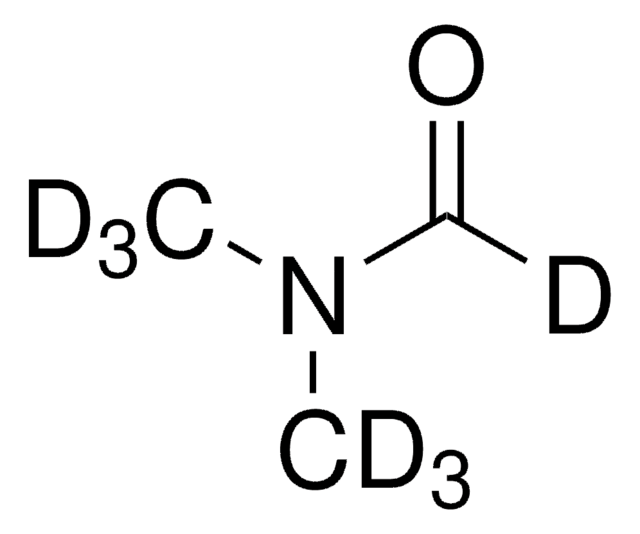736198
Ethylbenzene solution
NMR reference standard, 10% in chloroform-d (99.8 atom % D), NMR tube size 5 mm × 8 in. , ultra-thin wall
About This Item
Recommended Products
grade
NMR reference standard
analytical standard
Quality Level
concentration
10% in chloroform-d (99.8 atom % D)
technique(s)
NMR: suitable
NMR tube size
5 mm × 8 in. , ultra-thin wall
NMR tube wall thickness
0.24 mm
suitability
suitable for NMR (reference standard)
format
single component solution
SMILES string
CCc1ccccc1
InChI
1S/C8H10/c1-2-8-6-4-3-5-7-8/h3-7H,2H2,1H3
InChI key
YNQLUTRBYVCPMQ-UHFFFAOYSA-N
Looking for similar products? Visit Product Comparison Guide
Related Categories
Features and Benefits
Quantity
Signal Word
Danger
Hazard Statements
Precautionary Statements
Hazard Classifications
Acute Tox. 3 Inhalation - Acute Tox. 4 Oral - Carc. 2 - Eye Irrit. 2 - Repr. 2 - Skin Irrit. 2 - STOT RE 1 Oral - STOT SE 3
Target Organs
Central nervous system, Liver,Kidney
Storage Class Code
6.1C - Combustible acute toxic Cat.3 / toxic compounds or compounds which causing chronic effects
WGK
WGK 3
Flash Point(F)
>140.0 °F - closed cup - Not classified due to data which are conclusive although insufficient for classification.
Flash Point(C)
> 60 °C - closed cup - Not classified due to data which are conclusive although insufficient for classification.
Regulatory Listings
Regulatory Listings are mainly provided for chemical products. Only limited information can be provided here for non-chemical products. No entry means none of the components are listed. It is the user’s obligation to ensure the safe and legal use of the product.
PRTR
Class I Designated Chemical Substances
ISHL Indicated Name
Substances Subject to be Indicated Names
ISHL Notified Names
Substances Subject to be Notified Names
JAN Code
736198-BULK:
736198-VAR:
736198-8IN:4548173303772
736198-8IN-PW:
Choose from one of the most recent versions:
Already Own This Product?
Find documentation for the products that you have recently purchased in the Document Library.
Our team of scientists has experience in all areas of research including Life Science, Material Science, Chemical Synthesis, Chromatography, Analytical and many others.
Contact Technical Service







